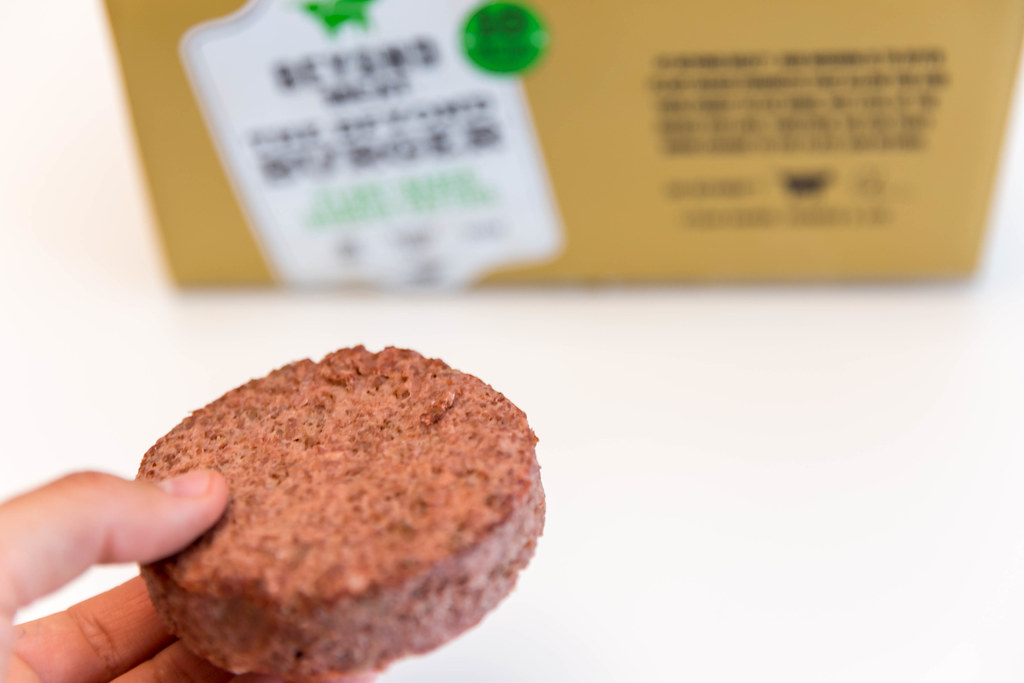The foods we eat are largely thanks to a big mingle of factors such as our age, where we reside in the world, what is available/affordable, indulgence, health, culture, religion, the society at the time and more. The primary diet of a healthy human includes some mix of water, fruits, vegetables, meats, seafoods, grains and dairy. The human body draws energy and survives off of the glucose made from fats, sugars and carbohydrates within those foods that we eat. The diets of people throughout the world is ever-changing but it has been made possible to fit most alterations into distinguishable categories. Popular diets today, excluding omnivores or those with food allergies, include pescatarians, vegetarians, vegans, paleos, ketos and others. Health, culture, religion, environmental pressures or personal choice can each play their part in deciding what diet a person wants to pick up. This article will focus on diets that exclude the consumption of meat, what it means for the environment and your body, and how it compares to plant-based meats.

The most common diets that exclude the consumption of meat are the pescatarian, vegetarian, and vegan diets. The pescatarian diet is composed of the “usual” omnivorous diet but with the exclusion of all land based meats. No red meat, no white meat, no processed meats and no luncheon meats. The consumption of all seafood, however, is included in the diet. The vegetarian diet is the same as the pescatarian diet but with the exclusion of all seafood as well. Those committed to this diet eat everything an omnivore can with the exception of all meats and seafood. The vegan diet is the exclusion of all animals themselves and all animal products. Meaning anything an animal produces, such as the milk of cows and the eggs of chickens. Some committed to this diet take it a step further and exclude the consumption of the honey of bees or the support of any product made with leather, wool, fur, beeswax etc. Alterations exist among all of these diets and for the individuals themselves depending on their wants or needs. The “rules” are not set in stone but the main ideas of these three diets circle around the statements above.
Before eliminating all red, white, processed and luncheon meats from their diet, people are most commonly confronted by questions such as, “Will I still be getting enough protein?”, “What can I use as a meat-like substitute in my cooking?” and “What difference will this make?”. Although these may seem like broad questions, the answers are simple. To keep it short and simple, lentils, beans, tofu, nuts, oats, nutritional yeast, eggs and yogurt are just a few examples of high protein food options that are replacements and improvements to the protein found in meat, which can be lower than that of some of the options listed. And for the meat-like substitute? This may have posed as a problem a few years back, but with the growing focus and awareness on health and alternative meat products in recent years, a large market had risen surrounding plant-based meats. There are countless options in all the familiar forms: burger patties, sausages, bacon, ground beef, ham, jerky etc.. Companies like Impossible Foods, Beyond Meat, Boca, Tofurky, MorningStar Farms and Amy’s Kitchen have made a name for themselves in the non-meat meat market. And from what I can attest, they taste like the real deal. But why would you make a switch if it is basically the same thing? Well that’s where the final question is answered.
Cutting out the consumption of meat not only has major benefits for the environment, but also on your overall health. By refraining from purchasing meat in the grocery store or ordering dishes that contain meat it makes it so that ultimately the meat industry makes less profit. The more is bought, for whatever reason, the higher the demand for meat will be. This is important to take into consideration because the meat industry takes part in many environmentally degenerative and inhumane practices.
“I’m taking AP Environmental Science right now and I’ve learned that eating meat is inefficient for humans because—for one animal to grow—they eat hundreds of thousands of calories, but when we kill the animal to eat it we don’t get nearly all that…maybe like a couple 100 calories. On top of that, the waste from slaughterhouses makes it so that a lot of poor neighborhoods and towns are being affected from it and getting E. coli and cancer and it’s also just another example of inequality because the poor are the ones being infected so it’s not a priority,” says Laila Goodman, a Junior at SBHS.
Feeding all the livestock, even though it’s mostly soy, grains, corn and/or hay, is an exhaust on natural resources because of how much more goes into the animals than whatever gets returned. A common example: A single pound of feedlot beef requires 2,500 gallons of water, 12 pounds of grain, 35 pounds of topsoil and energy equivalent to one gallon of gasoline. It’s not sustainable and already resources are being used up as a result. It’s more logical to switch to an alternative product that is sustainable. Then, the biggest driver of climate change is fossil fuel emissions. Methane, although one of the cleaner fossil fuels, becomes an atmosphere killer when released daily from the cattle farms where most meat today comes from. And the runoff waste poses as yet another negative effect of mass farms on the environment and all those who depend on it. The public drinking water gets contaminated as a result of the runoff waste from nearby slaughterhouses and this has been proven to affect residents in surrounding areas with E. Coli, forms of cancer and other side effects. Like stated above, it’s not a priority because the areas suffering from the infections are poorer, so it’s not seen as a priority. On top of that, the animals that cause all this mayhem are also given no quality of life whatsoever. Crammed, dirty, unhealthy, stressed, pumped full of antibiotics and fed genetically modified foods for the sole purpose of fattening them up is what the life of slaughterhouse animals looks like. If empathy for the animals is not enough, remember that all those germs and drugs in the animals from slaughterhouses land on your plate and enter your body. The less you buy, the less they profit, the better for the environment and also for you. Because meat itself is not as beneficial as one may seem to think, if anything it can be quite degenerative to your health. Studies show that red meat consumption can raise blood cholesterol levels and increase your chance of cancer and/or a stroke. But still, the meat industry glorifies meat and its benefits—and it’s ultimately for its own profit—. Many common arguments today, among them, “Humans have always eaten meat, we need it”, “We won’t get enough protein” and “Eat meat to get muscles” are all twisted concepts the meat industry has inconspicuously endowed into society. The last two arguments have been debunked above and the first has just as simple of a counterargument: We don’t live in the same times we did when it was necessary to eat meat; when we were hunters and gatherers that relied on most all resources available and high-meat diets to survive the harshness of winter. With supplements available resources year-round and grocery stores and restaurants open around the clock, eating meat for survival is no longer necessary. For flavor every once in a while sure, but then plant-based products are the more environmentally friendly and humane option that tastes very similar, if not the same. With the number of cattle having long surpassed human population, the mistreatment of the animals that are given no quality of life, the vast amount of land that has to be cleared for the animals and the unhygienic, chemical-riddled meat that ends up in our bodies, it begs the question of whether supporting the meat industry is worth it.
Meat alternatives used to be basically restricted to tofu and tempeh, but an increase of awareness of health and environmental conservation among the new generations has driven the market of plant-based meats to rise in popularity. The primary ingredient in these plant-based burgers is water. After that, there’s a mix of plant proteins and fats, and then spices/seasoning for flavor. Although this doesn’t make the products beneficial towards health, choosing the plant-based meat products over animal meats can cut down on your risk of heart disease, cancer and type-2 diabetes. This is mostly due to the decrease in high levels of saturated fat found in red meat in particular. With Americans consuming large amounts of meat with most meals, most days, and heart disease being the leading cause of death in the United States, it’s clear why this adds up. Anyone at risk of a heart disease should of course be doing more than simply switching to plant-based meats, but that transition will already make a difference in comparison to animal meats. Then, there is the matter of cost. How much plant-based meats cost in comparison to animal meats has caused many disputes and complaints over plant-based meat products. To make a long answer short, this is due to the fact that plant-based meats are made on a smaller scale and, although expanding, the meatless-meat industry is still far behind the meat industry that mass produces to keep up with demands and make meat affordable to consumers. It’s not ideal and the truth is, plant-based meat is not meat. But the alternative, opens up a gateway to business, health and environmental advancement opportunities.
“I mean plants, why not,” says Laila Goodman, SBHS Junior.
Plant-based meats in comparison to animal meats have caused a number of disputes regarding flavor, cost, environmental benefits and more, but at the end of the day, it is up to the individual on what they want to do. This is not an article that is trying to get you to hop on a strict diet or become overly conscious about meat consumption. Every action towards less or no meat consumption makes a difference for the environment and for yourself. Buy free range, grass fed products for the sake of the animals, buy plant-based or less meat for the sake of environmental health and get good quality products and eat moderate to no amount for the sake of your own health.





























